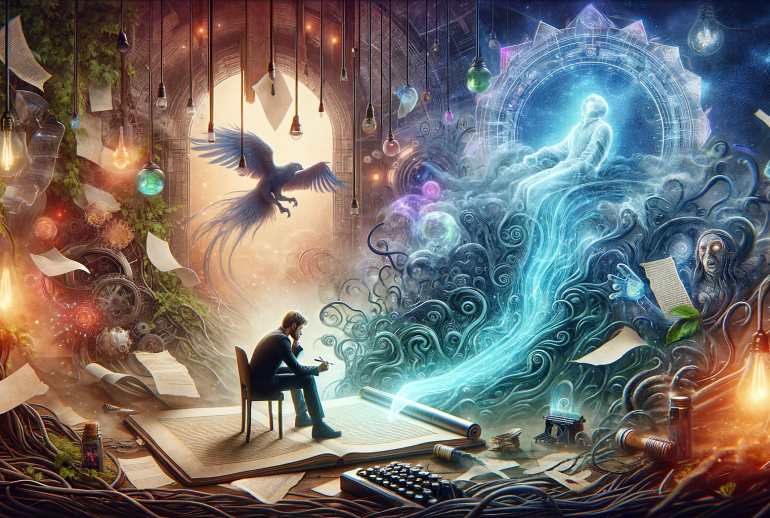World-building is a craft that breathes life into fictional realms, but like any skill, it thrives when honed through practice. Writers embarking on journeys through intricate universes often seek effective exercises and prompts to refine their world-building skills. In this exploration, we delve into a plethora of practical exercises and prompts tailored to nurture your creativity, enhance your mastery, and guide you on a captivating world-building adventure.
The Art of Imagination
Map Your World
- Exercise 1: Hand-Drawn Maps: Sketch a map of your fictional world by hand, paying attention to geographical features, cities, and landmarks. This tactile approach encourages spatial thinking.
- Exercise 2: Digital Mapping Tools: Utilize digital mapping tools to create detailed, interactive maps. Tools like Inkarnate or Wonderdraft offer versatile options for adding depth to your world.
Cultural Cornerstones
- Exercise 3: Cultural Collage: Craft a collage representing the customs, attire, and artifacts of a fictional culture. This visual exercise helps you visualize the cultural nuances of your world.
- Exercise 4: Interview Your Characters: Conduct interviews with characters from your world to explore their perspectives on cultural traditions and beliefs.
Case Study: Tolkien’s Middle-earth Maps
J.R.R. Tolkien’s meticulous maps of Middle-earth, painstakingly drawn by the author himself, are iconic examples of world-building through cartography. These maps not only enriched his storytelling but also ignited readers’ imaginations.
Conflict and Contradiction
Divergent Points of View
- Exercise 5: Conflicting Histories: Develop two divergent accounts of a historical event from your world. These conflicting narratives can add depth to your world’s history and foster storytelling opportunities.
- Exercise 6: Multi-Perspective Conflict: Write a scene from the viewpoints of characters with opposing beliefs or allegiances. This exercise immerses you in your world’s ideological conflicts.
Mysteries and Legends
- Exercise 7: Cryptic Legends: Invent a cryptic legend or unsolved mystery from your world’s past. Challenge yourself to drop subtle hints throughout your narrative.
- Exercise 8: Exploring the Unexplained: Write short stories or vignettes that explore supernatural or unexplained phenomena in your world. These tales can contribute to your world’s mystique.
Environmental Embrace
Sensory Immersion
- Exercise 9: Sensory Description: Select a location within your world and describe it using all five senses. This exercise fosters immersive, sensory-rich world-building.
- Exercise 10: Weather Journal: Maintain a journal detailing the weather patterns in your world. Weather can significantly impact cultures, ecosystems, and narratives.
Collaborative Endeavors
Collaborative World-Building
- Exercise 11: Group World-Building: Collaborate with fellow writers to build a shared world. Each writer can take ownership of specific aspects, fostering collective creativity.
- Exercise 12: Remix Prompts: Share world-building prompts with writing groups or online communities and compare the diverse interpretations and creations.
Challenges and Growth
Constraints and Creativity
- Exercise 13: Word Limit Challenge: Set a strict word limit for a world-building exercise. Convey essential details within constraints to enhance conciseness and clarity.
- Exercise 14: Genre-Specific Challenge: Choose a subgenre within speculative fiction (e.g., cyberpunk, steampunk, or solarpunk) and craft world-building elements specific to that genre.
Conclusion
World-building is an exhilarating odyssey of imagination and creation. These practical exercises and prompts serve as your compass, guiding you through the labyrinthine terrain of your fictional realms. Through the art of map-making, cultural exploration, narrative conflict, sensory immersion, and collaborative ventures, you embark on a journey of continual growth and refinement. Challenges push the boundaries of your creativity, while constraints hone your ability to convey complexity within simplicity. As you immerse yourself in these exercises, remember that the world you build is a reflection of your unique vision and storytelling prowess. So, pick up your pen, or your digital stylus, and let your world come to life, one exercise at a time.



